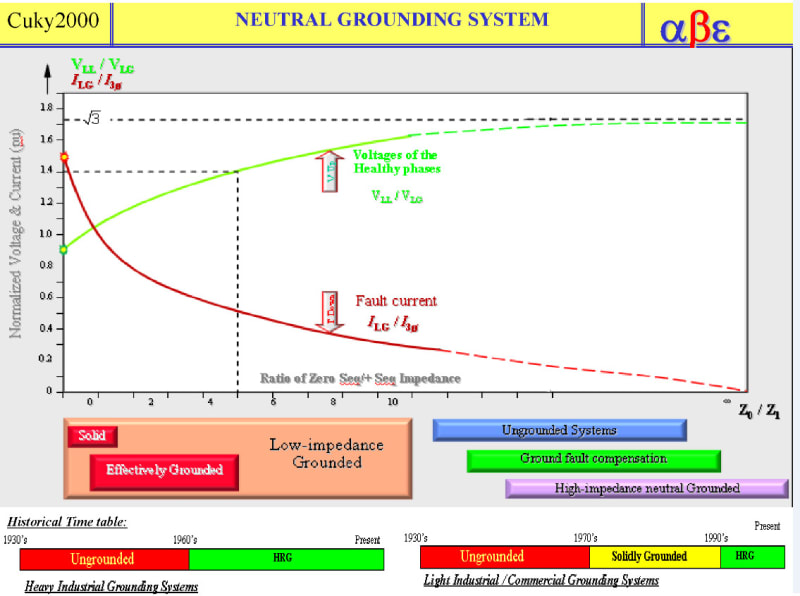. Yes, technically there is possible to use neutral grounding resistance for transformer above 33 kV. However, overvoltage, tripping, system reclosing and other O&M strategies need to be understood. Should be noted that resistance grounded are preferred for industrial applications and it is not preferred for large power transformers in the power utility industry.
The main purposes of resistance (impedance) grounding is for controlling the voltage line-to- ground within predictable limits to value equal to or slightly greater than the capacitive charging current of that system. It also provides for a flow of current that will allow detection of an unwanted connection between system conductors and ground.
Usually, resistance grounded are used as follow:
> 1) Low Resistance Grounded (LRG): 2.4 kV to 25 kV
> 2) High Resistance Ground (HRG): 480V to 5kV
The line-to-ground voltage of the unfaulted phases will increase during a ground fault, which increases the probability of a second ground fault. The surge arrester MCOV and duty cycle should be rated to withstand the overvoltage usually as Phase-to-phase instead Phase-to-ground.
Often relay 59 (overvoltage relay) could be installed to detects the increased voltage across the resistor. It sends a signal to the control circuitry to initiate a ground fault alarm by energizing the “alarm” indicator.
See thread238-451728 and the sketch below illustrating the overvoltage performance for different grounding systems.

